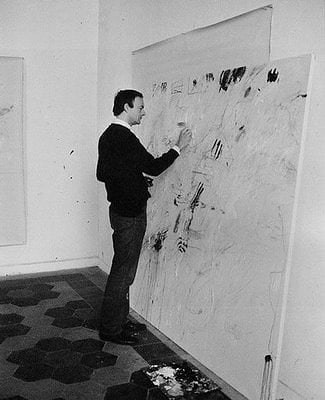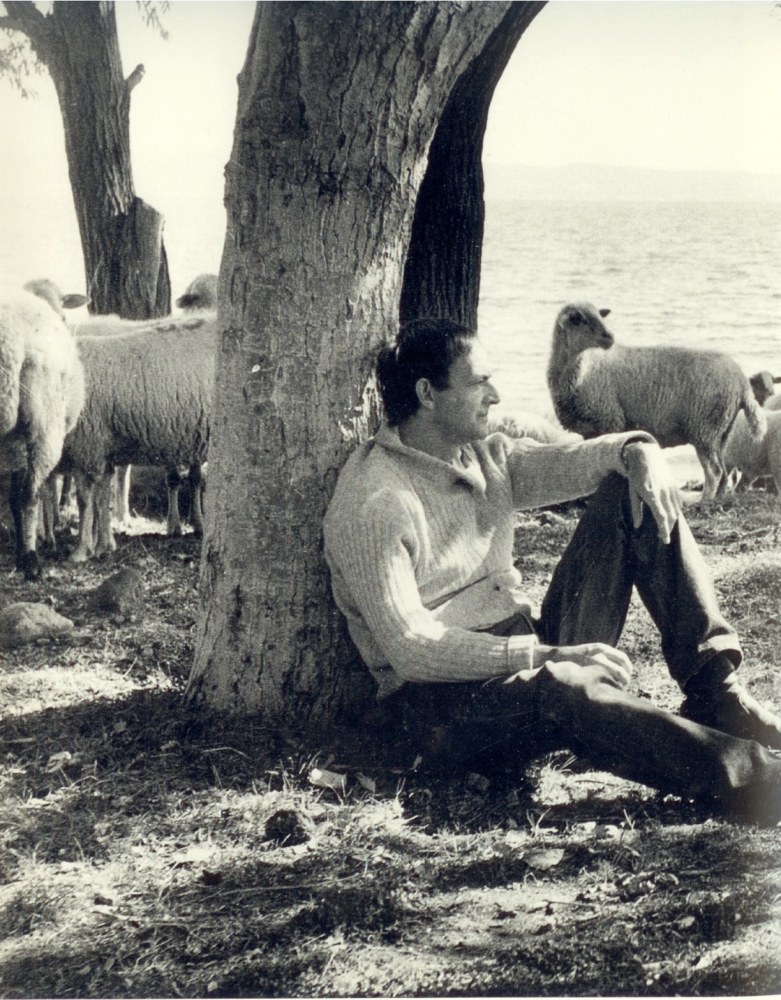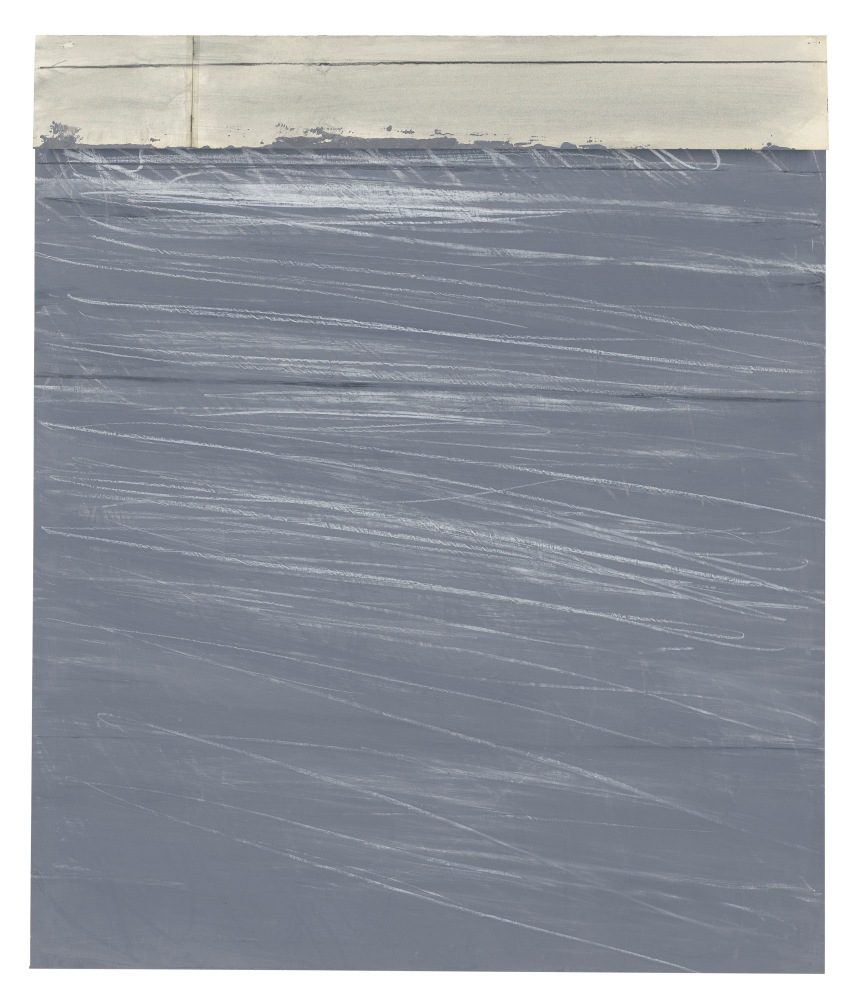Cy Twombly
Untitled, 1969-71
Cy Twombly
“Every line is the actual experience with its own unique story.”
- CY TWOMBLY

Cy Twombly in his studio, Rome, 1962. Photo by Mario Donder
Cy Twombly (1928-2011) is often connected to large, expressionistic paintings, and a use of line that is both childlike in its form and profoundly thoughtful and evocative in its associations. Yet, Untitled, a work on paper executed between 1969 and 1971, illustrates Twombly’s ability to effectively render these forms and ideas on a smaller, more intimate scale.
Untitled is best situated within Twombly’s oeuvre in relation to the series of Blackboard paintings he began in 1966 and continued into the early 1970s. These large-scale paintings feature fields of looping scribbles painted on dark grey backgrounds that recall a blackboard slate in a school classroom. Although still evocative of movement and energy, the Blackboard paintings came about in part as a result of the negative reaction to his widely panned Nine Discourses on Commodus series. Given the intense exuberance in these almost violently colorful works, Twombly attempted to steer away from that mode of expression into something more sober and restrained in its simplicity. Therefore, the Blackboards began a phase of an austere, cool attitude that re-engaged with the graphic elements of line and geometry that had dominated Twombly’s works of the 1950s.

Cy Twombly on Lake Bolsena, 1972. Photo by Plinio De Martiis.
At the time, critics saw this new style as Twombly’s response to the aesthetics of the dominant Minimalist and Conceptualist movements. This was not an entirely incorrect assessment—artists of those groups, such as Eva Hesse and Richard Serra, were likewise playing with the limitations and possibilities of geometry and line—but the influences for works such as Untitled ran much deeper for Twombly. Notably, Twombly began Untitled in 1969, the year of the Apollo 11 mission. Like the rest of the world, Twombly was deeply fascinated by the space race, and the sparse, mathematical and geometric forms that are visible in Untitled and the Blackboard paintings are a direct result of that rapture. That same year, Twombly spent the summer on Lake Bolsena in Italy, where he created a group of paintings that more deeply explored the concepts of space-time within the context of the Apollo 11 mission, and which thus share a vital relationship to Untitled. Also, at this time, Twombly was looking at Leonardo da Vinci’s studies of water and cloud formations (particularly the Deluge drawings), the way speed and motion was conveyed in the works of Italian Futurists such as Giacomo Balla and Umberto Boccioni, and the movement photography of Eadweard Muybridge. All of these forces combine in Untitled to evoke a sense of speed, measurement, and distance that transcends any one particular artistic movement or cultural event yet retains the spirit of each.
“It's instinctive ... It's like a nervous system. It's not described, it's happening. The feeling is going on with the task. The line is the feeling, from a soft thing, a dreamy thing, to something hard, something arid, something lonely, something ending, something beginning.”
- CY TWOMBLY

